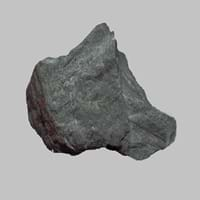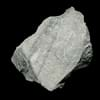Definition
Slate is a fine-grained, foliated, homogeneous metamorphic rock derived from an original shale-type sedimentary rock composed of clay or volcanic ash through low-grade regional metamorphism
Taconite is a low-grade iron ore which belongs to sedimentary rock and containing about 27% iron and 51% silica
Origin
England
Western Australia, Minnesota
Discoverer
Unknown
Newton Horace Winchell
Etymology
From Old French esclate, from esclat (French éclat)
From the name of Taconic Mountains in New England
Class
Metamorphic Rocks
Sedimentary Rocks
Sub-Class
Durable Rock, Medium Hardness Rock
Durable Rock, Medium Hardness Rock
Group
Not Applicable
Not Applicable
Other Categories
Fine Grained Rock, Opaque Rock
Coarse Grained Rock, Opaque Rock
Texture
Foliated
Banded, Trellis
Color
Black, Brown, Buff, Green, Light to Dark Grey, Purple, Red, Shades of Blue
Red, Reddish Brown
Durability
Durable
Durable
Scratch Resistant
Yes
Yes
Appearance
Dull
Layered, Banded, Veined and Shiny
Interior Uses
Bathrooms, Decorative Aggregates, Entryways, Floor Tiles, Flooring, Homes, Hotels, Interior Decoration, Kitchens, Stair Treads
Decorative Aggregates, Entryways, Flooring, Homes, Interior Decoration
Exterior Uses
As Building Stone, As Facing Stone, Garden Decoration, Paving Stone
As Building Stone, Garden Decoration, Paving Stone
Other Architectural Uses
Curbing
Curbing
Construction Industry
As Dimension Stone
As Dimension Stone, Used for flooring, stair treads, borders and window sills.
Medical Industry
Not Yet Used
Not Yet Used
Antiquity Uses
Artifacts, Monuments, Sculpture, Small Figurines
Artifacts
Commercial Uses
Blackboards, Commemorative Tablets, Laboratory bench tops, Standard material for the bed of Billiard table, Standard material for the beds of Pool and Snooker table, Tombstones, Used in aquariums, Writing Slates
As a touchstone, Cemetery Markers, Creating Artwork
Types
Not Available
Not Available
Features
Easily splits into thin plates, Surfaces are often shiny, Very fine grained rock
Is one of the oldest rock
Archaeological Significance
Famous Monuments
Data Not Available
Data Not Available
Famous Sculptures
Data Not Available
Data Not Available
Pictographs
Used
Not Used
Petroglyphs
Used
Not Used
Formation
Slate is a low grade metamorphic rock that is generally formed by metamorphosis of mudstone or shale, under relatively low pressure and temperature conditions.
Taconite is a type of sedimentary rock formed when a river carries or transports pieces of broken rock as it flows. When the river reaches a lake or sea, its load of transported rocks settles or deposits at the bottom of sea or lake.
Mineral Content
Apatite, Biotite, Chlorite, Feldspar, Graphite, Hematite, Kaolinite, Magnetite, Pyrite, Tourmaline, Zircon
Hematite, Magnetite, Quartz
Compound Content
Aluminium Oxide, CaO, Iron(III) Oxide, Potassium Oxide, MgO, Sodium Oxide, Silicon Dioxide, Titanium Dioxide
Fe, Iron(III) Oxide, Silicon Dioxide
Types of Metamorphism
Burial Metamorphism, Cataclastic Metamorphism, Regional Metamorphism
Not Applicable
Types of Weathering
Biological Weathering, Chemical Weathering, Mechanical Weathering
Biological Weathering, Mechanical Weathering
Types of Erosion
Coastal Erosion, Glacier Erosion, Water Erosion, Wind Erosion
Chemical Erosion, Coastal Erosion, Glacier Erosion, Water Erosion, Wind Erosion
Grain Size
Very fine-grained
Large and Coarse Grained
Fracture
Splintery
Uneven, Splintery or Conchoidal
Streak
Light to dark brown
White
Porosity
Less Porous
Highly Porous
Compressive Strength
Not Available
Specific Gravity
2.65-2.8
5-5.3
Transparency
Opaque
Translucent to Opaque
Density
2.6-2.8 g/cm3
Not Available
Resistance
Heat Resistant, Impact Resistant, Pressure Resistant, Wear Resistant
Heat Resistant, Impact Resistant, Pressure Resistant, Wear Resistant
Deposits in Eastern Continents
Asia
China, India, Turkey
China, India, Iran, Iraq, Oman, Russia, Saudi Arabia, Taiwan, Thailand, Vietnam
Africa
Not Yet Found
Kenya, Morocco, South Africa, Tanzania
Europe
Belgium, France, Germany, Italy, Norway, Portugal, Spain, United Kingdom
Austria, France, Greece, Italy, Malta, Poland, Portugal, Serbia, Spain, Sweden, United Kingdom
Others
Arctic
Greenland, Mid-Atlantic Ridge
Deposits in Western Continents
North America
USA
Canada, Mexico, USA
South America
Brazil
Bolivia, Brazil
Deposits in Oceania Continent
Australia
Not Yet Found
New South Wales, Queensland, South Australia, Western Australia
All about Slate and Taconite Properties
Know all about Slate and Taconite properties here. All properties of rocks are important as they define the type of rock and its application. Slate belongs to Metamorphic Rocks while Taconite belongs to Sedimentary Rocks.Texture of Slate is Foliated whereas that of Taconite is Banded, Trellis. Slate appears Dull and Taconite appears Layered, Banded, Veined and Shiny. The luster of Slate is dull while that of Taconite is earthy. Slate is available in black, brown, buff, green, light to dark grey, purple, red, shades of blue colors whereas Taconite is available in red, reddish brown colors. The commercial uses of Slate are blackboards, commemorative tablets, laboratory bench tops, standard material for the bed of billiard table, standard material for the beds of pool and snooker table, tombstones, used in aquariums, writing slates and that of Taconite are as a touchstone, cemetery markers, creating artwork.










